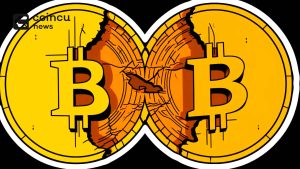Former developer Gavin Andresen: BTC price will reach 6 million in 2061, whales closed the Bitcoin network in 2100
On September 21, former developer Gavin Andresen a Contributions interesting about the “potential future of Bitcoin”. The blog post describes a hypothetical situation for the Bitcoin network in 2061, when most of the BTC transactions do not take place on this network.
Gavin Andresen – Former Bitcoin Developer
hypothesis $ 6 million per bitcoin and 2061
Since Satoshi Nakamoto left in 2010, Gavin Andresen has been considered the top software maintainer for several years after the Bitcoin inventor left him the key. In 2011, developer Mike Hearn also said he had an email from Satoshi saying that he “switched to other things … Bitcoin is better developed by Gavin and everyone else”. Currently, Andresen is no longer the main administrator and has not been an active Bitcoin core developer for many years.
Earlier, Andresen mentioned Ethereum’s tornado mixing protocol and wallet privacy in general. In January 2018, he also discussed the Bitcoin Cash network in a proposal he wrote entitled “Store UTXOs as bit-vectors”. According to a blog post about the tornado mixing protocol, Andresen. recently share his opinion through the article: “Isn’t that technology?” Then, on September 21, 2021, he discussed the Bitcoin network again.
The former Bitcoin core developer said people should view this as “a little piece of science fiction”, but “out of all the probabilities for the future, I think this has a good chance”.
“Imagine that in 2061 the price of BTC is $ 6 million – that’s about $ 1 million in 2021 due to inflation. Miners are rewarded with 0.006103515625 BTC per block, plus transaction fees of around 5 BTC for 4,000 or more transactions (USD 7,500 per transaction). But most of the BTC transactions do not take place on the Bitcoin network. Most of the BTC is locked in multi-signature issues, which are secured by multi-party calculations and copied to another chain as packaged tokens.
People are moving BTC to another network because they want faster transactions, lower fees, better data protection, or want to invest in decentralized financial instruments. Transactions that take place on the main Bitcoin network are often of great value, mainly between superwhale owners (central exchange, central bank, and decentralized multi-party computer address that contains all of the packaged coins).
“Possibility of no bitcoin circulating in the bitcoin network“
Andresen’s hypothesis is very likely and there are many packaged BTC or synthetic BTC currently in use on other blockchains. Dune Analytics shows that the amount of BTC used via Ethereum is 269,642 BTC in 7 different projects. The Wrapped Bitcoin (WBTC) project has a total of 205,921 WBTC at the time of writing. At the same time, Andresen emphasizes that the super whale will hold the net forever.
“These whales keep the Bitcoin network going forever. They are miners and creators of transactions, they don’t care what the transaction fees are because they get as many fees as possible. By 2100, whales realized that the mining reward was essentially zero and fewer and fewer transactions were taking place over the slow, expensive, and privacy-free Bitcoin network. So they decided to make it simpler and save money by disabling it.
One after the other, they close the “bridges” that move BTC between the chains. They then burn any BTC that is blocked on the Bitcoin chain by sending it to address 0x000 … to make sure no one on the network can use it. In the end, no new BTC is produced and no BTC circulates in the Bitcoin network. There is nothing left to secure and the chain stops. “
S.idechain lIs it a competitor or will it help Bitcoin scale?
Andresen came to the conclusion that around “20 million BTC” will circulate in other blockchain networks.
“Valuable because the amount is limited and BTC is the first scarce digital asset.”
Interestingly, this topic has been debated lately and comes from many sources other than Andresen’s article.
For example, on September 24th, Bitcoin expert John Carvalho, also known as “bitcoinerrorlog”, tweets:
“Sidechains compete with Bitcoin, not with scaling. They also don’t really exist because:
- The original idea and design of the two-way closure was never achieved.
- Should be called anchor chains or something else.
- Like shitcoins competing for transactions instead of money.
- Inability to restrict the use of shitcoins.
- Doesn’t work with Bitcoin. “
Brothers speak Add:
“Don’t treat anything sporadically. I’m not beating Bitcoin, I’m beating misconceptions about Bitcoin. Don’t be upset, learn. “
However, not everyone agrees with Carvalho’s view of sidechains. Bitcoin advocate John Light did share his opinion:
“Sidechains that use BTC as a native asset and pay miners for security don’t compete with Bitcoin. Even if sidechains use BTC as a native asset without paying the security of bitcoin miners, they will be just as competitive with bitcoin, such as:
Besides, light too share The article “Scaling Bitcoin with Sidechain” and finally:
“Sidechain also helps to scale Bitcoin.”
Join Bitcoin Magazine Telegram to keep track of news and comment on this article: https://t.me/coincunews
Minh Anh
According to News Bitcoin
Follow the Youtube Channel | Subscribe to telegram channel | Follow the Facebook page





















